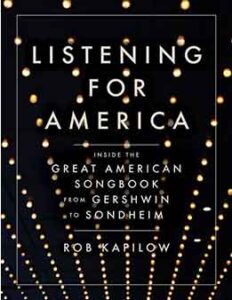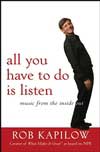
Listening for
America
Inside the Great American Songbook from Gershwin to Sondheim
Liveright, 2019
Finalist • The Marfield Prize
[National Award for Arts Writing]
“A wonderful guy who brings music alive!”
― Katie Couric
What Makes It Great?
Short Masterpieces, Great Composers
 WHAT MAKES IT GREAT? is ideal for anyone interested in classical music, whether a first-time listener, experienced concertgoer, or performing musician. It offers an entrée into the world of eighteen great composers and a collection of individual masterpieces spanning almost two hundred years.
WHAT MAKES IT GREAT? is ideal for anyone interested in classical music, whether a first-time listener, experienced concertgoer, or performing musician. It offers an entrée into the world of eighteen great composers and a collection of individual masterpieces spanning almost two hundred years.
Read more
All You Have To Do Is Listen
Music from the Inside Out

Winner PSP Prose Award for Best Book in Music and the Performing Arts.
In this book, Kapilow helps readers become great listeners by explaining and expanding on his belief that the core of real listening has less to do with musical terminology and historical facts than with our ability to pay attention and to listen closely.